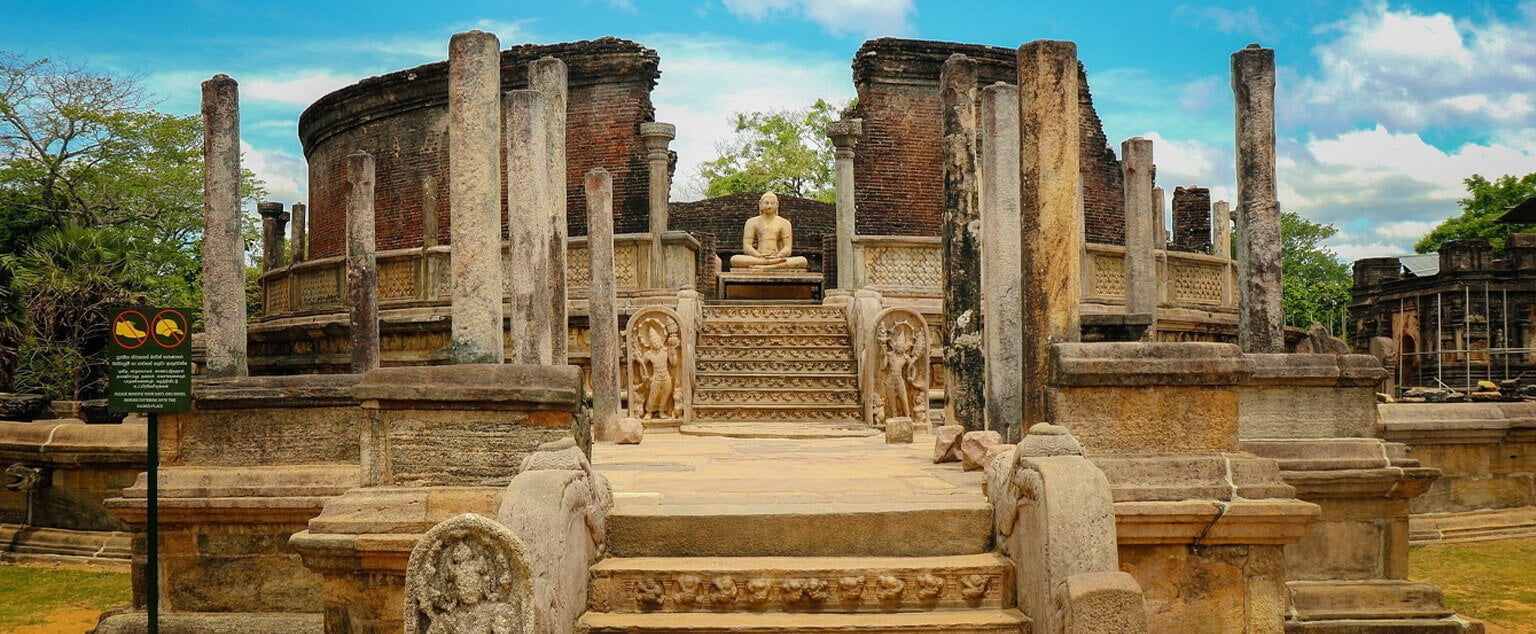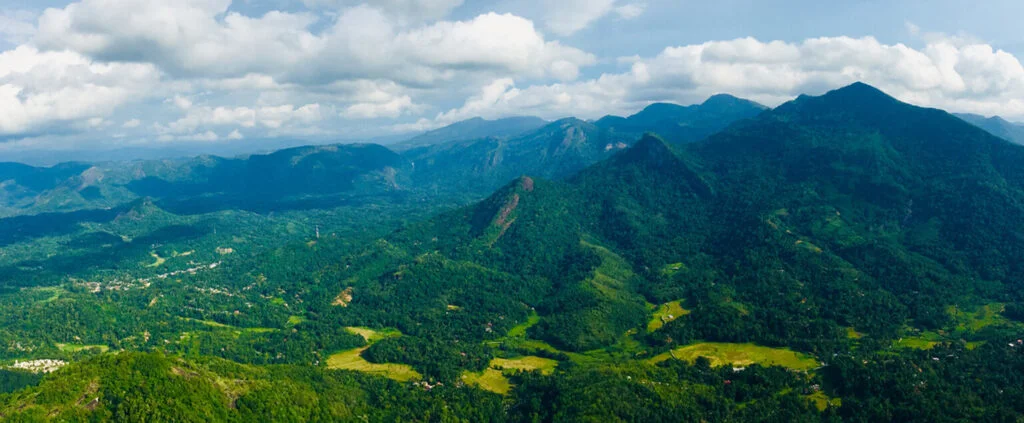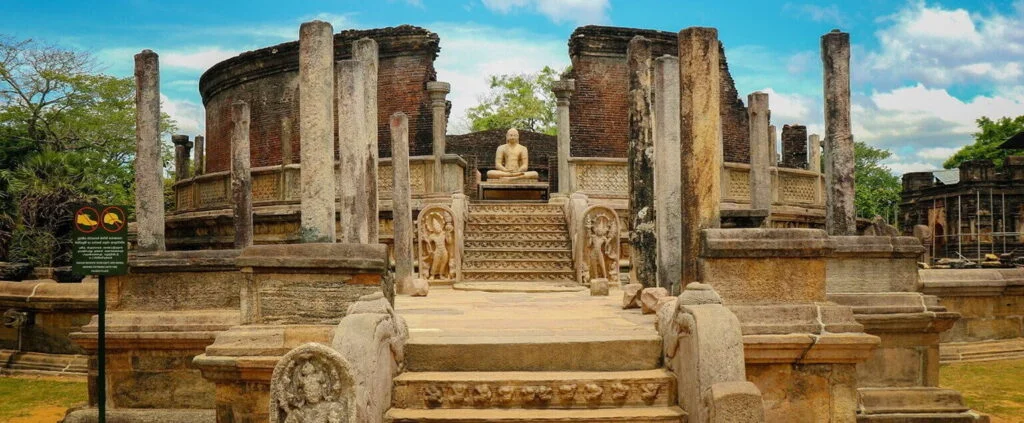Explore Polonnaruwa, Sri Lanka’s sacred city, with our in-depth guide, which includes how to get there, when to visit, what to see within the complex, and a brief historical history.
Polonnaruwa History
Polonnaruwa, Sri Lanka’s second most ancient city, has an astounding history. After the destruction of the previous capital, Anuradhapura, in 993 A.D., Polonnaruwa became Sri Lanka’s second capital.
The capital at the time was called “Jananathapuram” and was ruled by the Chola dynasty. After three centuries as the South Indian Chola Dynasty’s empire, it was regained by Sinhalese King Vijayabahu I in 1070 A.D.
Vijayabahu 1 became the first monarch of the Polonnaruwa kingdom and the king of the entire island after driving out the Cholas. Visitors to Polonnaruwa can still marvel at the Cholas’ Brahmanic monuments, which bear witness to their reign.
With the Cholas’ defeat came an era of immense economic prosperity in Polonnaruwa, as well as a period of Sinhalese cultural rebirth. After the great King Vijayabahu I died after ruling the kingdom for 40 years, King Parakramabahu I was crowned in Polonnaruwa, and the city reached its pinnacle of power and glory under his reign, becoming Sri Lanka’s version of the Gardens of Babylon.
During King Parakramabahu’s reign, a vast irrigation network with reservoirs resembling natural inland seas was built, resulting in extensive rice farming, earning Sri Lanka the nickname “The Granary of the Orient.”
By the early 13th century, the city had been abandoned, and the capital had been shifted to the western half of the island, where modern-day Colombo presently stands.
Polonnaruwa was later designated a UNESCO World Heritage Site in 1982. Polonnaruwa is remains one of Sri Lanka’s most scrupulously kept archaeological sites, providing evidence to the rigor and genius of the kingdom’s founding monarchs.
Where is Polonnaruwa?
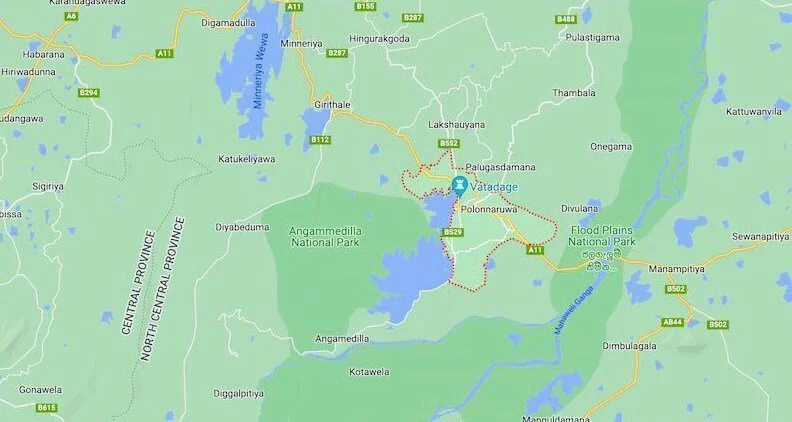
Polonnaruwa is located in Sri Lanka’s North Central Province, in a location known as the cultural triangle, around 220 kilometers from the nation’s capital, Colombo, and about 50 kilometers from the majestic Sigiriya.
This area is home to many of Sri Lanka’s major former capitals dating back over 1,000 years and is rich in historical landmarks and cultural marvels, including Sigiriya, Dambulla, and Anuradhapura. It also has a large number of national parks, allowing for considerable sightseeing with little effort. It’s essentially nirvana for history and wildlife aficionados.
When is the best time to visit Polonnaruwa?
The weather of Sri Lanka, like its politics, is a convoluted beast marked by two distinct monsoons that affect various sections of the island at different periods of the year. With this in mind, the best time to view the wonderful sights of Polonnaruwa is from December to March.
We strongly advise coming in Polonnaruwa as early as possible, not only to avoid the relentless tropical heat and sun, but also to avoid the crowds that begin to form around 10 a.m. We recommend arriving between 8 and 9 a.m.
How to get around Polonnaruwa?
Because Polonnaruwa is spread out over a large area, it takes some time to get to the various sites within the ancient city. The following are the best ways to visit the historic ruins:
- Rent a bike: Renting a bike is perhaps the best (and most cost-effective and efficient) way to see the old city of Polonnaruwa. You can see more views while pedaling through the ancient site and travelling between the attractions at your own time. This is critical in the Sri Lankan heat (we advocate frequent pauses, ideally ice cream breaks). At a moderate pace, the tour takes roughly 4 to 5 hours. Bikes can be rented at the complex’s entrance near the museum or in town near the bus stop.
- Walking: If you have a full day free and a lot of stamina (or are sadistic), you could go for a walk. Even though the archaeological site in Polonnaruwa is smaller than that in nearby Anuradhapura, it can be intimidating. We recommend walking if you’re reasonably fit and can take being on your feet and exploring for at least 8 hours. If you need to rest your weary bones, there are plenty of shaded areas to choose from – just bring plenty of water.
- Hire a tuk-tuk guide: Tuk-tuks can be a useful means of transportation if you prefer to avoid physical activity, especially in the searing heat.
What to see in Polonnaruwa?
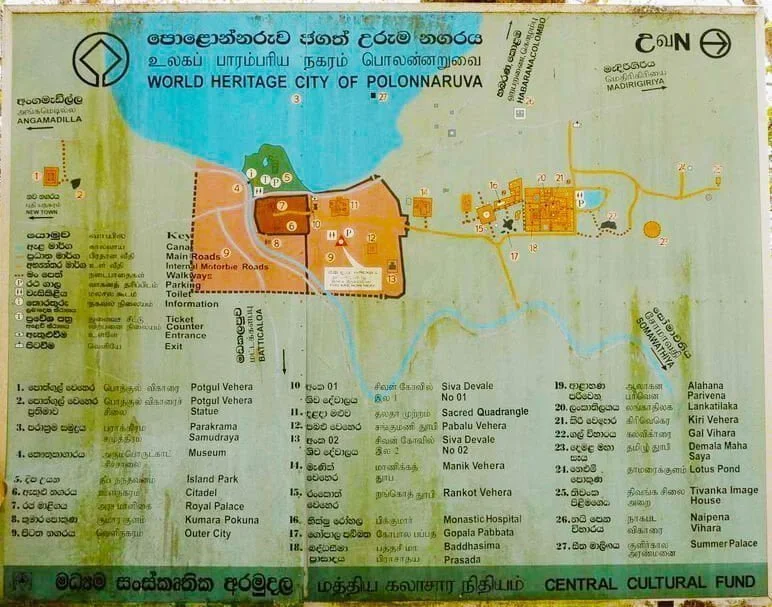
Polonnaruwa is filled with architectural and archaeological treasures, encompassing an eclectic range of structures, including rock-cut caves, monasteries, and dagobas, as well as ancient warrior gates, palaces, and other stupas. Whether you are an enthusiastic history buff or not, the sites themselves, as well as their magnificence, will leave a lasting impression on you, and rightly so – they are some of the finest structures to be found in all of Sri Lanka.
This medieval city will captivate you with its incredible structures and landscapes, and it will traverse your way through its fascinating history while allowing you to take in all of its natural beauty and historic significance. The following are absolute must-see places to visit in Polonnaruwa that are living testimonies to Sri Lankan history and something that should not be missed at all costs if you ever find yourself in this region.
Archaeological museum of Polonnaruwa
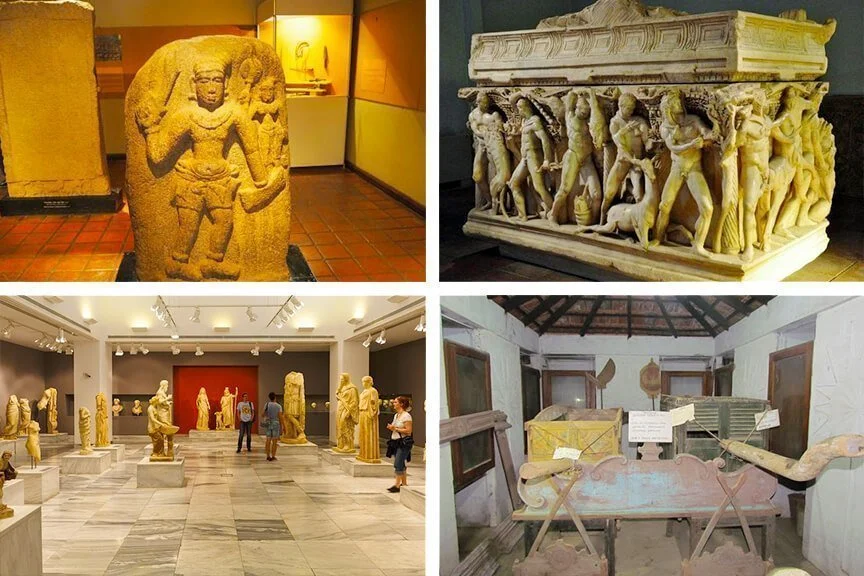
The Polonnaruwa Archeological Museum is the starting point for your historic city adventures. You’ll find this one-story building as you enter the Polonnaruwa archaeological site, and despite its small size, it’s a treasure mine of fascinating old objects and exhibitions.
A visit to the museum will provide you with a thorough grasp of the sacred city. The museum is organized in the style of an ancient city, with different wings dedicated to the citadel, the monastery area, the outlying city, and the Hindu monuments. When you visit the part with the ancient medical instruments artifacts, you’ll be shocked at how similar they are to modern surgical equipment.
The royal palace of king Parakramabahu
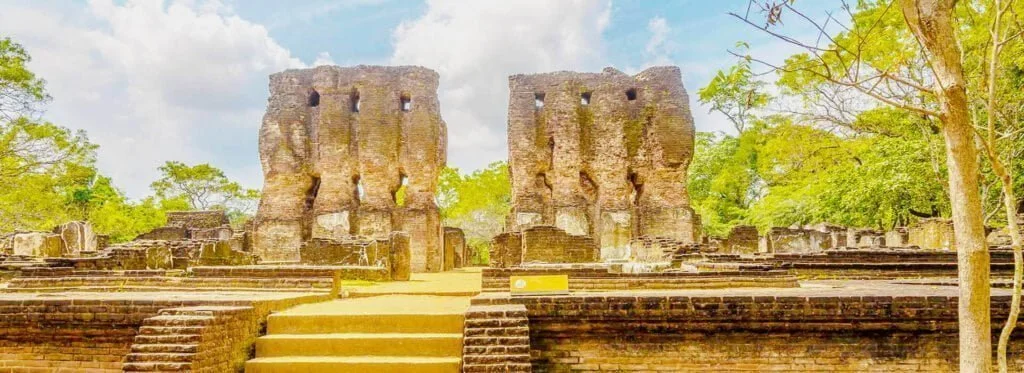
The ruins of King Parakramabahu I’s spectacular Royal Palace will be the first group of ruins you’ll come across after leaving the museum. This structure once housed over 1,000 chambers distributed across seven levels; however, a deliberate fire set by invaders destroyed the structure, and only a portion of it remains today.
The Palace was known as the “Vijayantha Prasada,” and it was thought to be one of the tallest structures of the time. The surviving portions of the huge walls that are thicker than one meter, as well as the foundation walls and parts of the stairs, provide an impression of the structure’s scale.
The Sacred Quadrangle (Dalada Maluva)
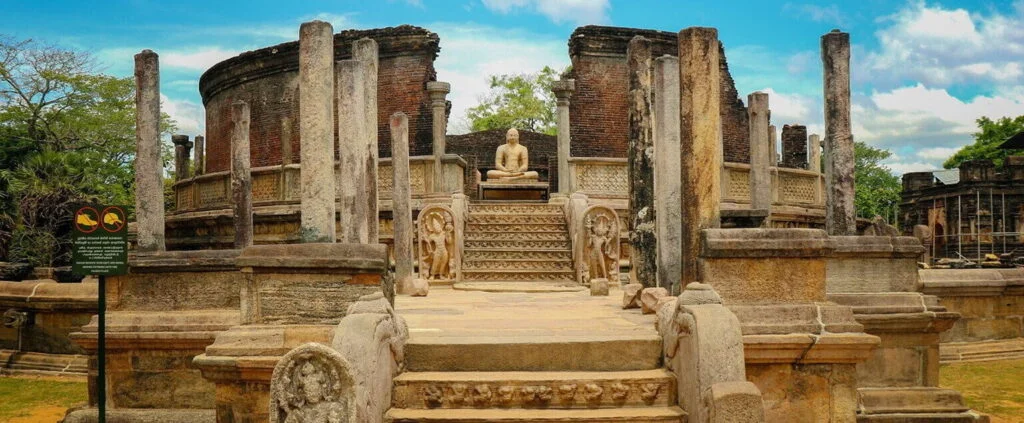
The imposing Sacred Quadrangle, as well as some other old Buddhist remains, can be found at the Dalada Maluwa, one of the best locations to visit in Polonnaruwa.
Over ten magnificent structures can be found in the Sacred Quadrangle, including the Hetadage, Atadage, Vatadage, Image of Boddhisattwa, Sathmahal Prasadaya, and Thuparama. Because there are numerous places to visit in Polonnaruwa nearby, you should definitely take your time exploring the area.
Pabalu Vehera Stupa
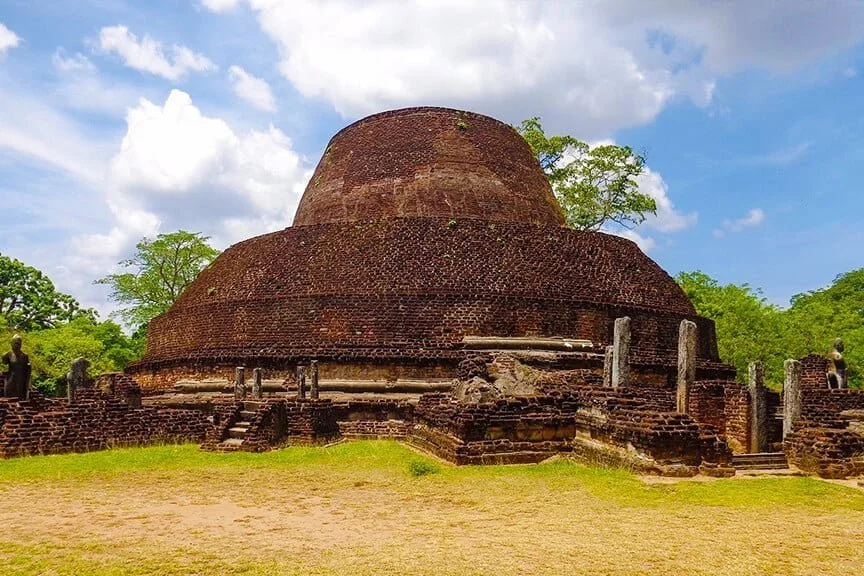
The Pabalu Vehera Stupa stands out owing to its unique construction and beautiful structure. This medieval monastery was built by Queen Rupawathi, one of King Parakramabahu’s wives. It has an unusual shape and has been devastated over the centuries by conquerors and treasure hunters.
The Pabalu Vehera Stupa is built of brownish bricks that stand out against the rich vegetation of the jungle in which it is located.
Rankoth Vehera
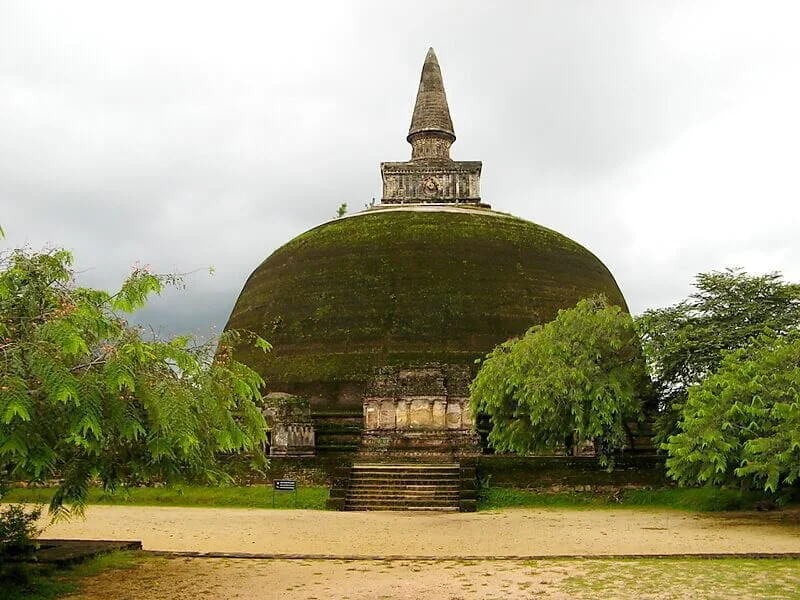
No trip to Polonnaruwa would be complete without a stop at the Rankot Vehara, the largest dagaba in the city and the fourth largest in Sri Lanka. This dagaba, built during the reign of King Nissanka Malla, is certainly one of the top locations to see in Polonnaruwa.
The monastery is largely composed of brick and is in excellent condition. When compared to other structures in the area, this massive structure is in excellent condition.
Lankatilaka Temple
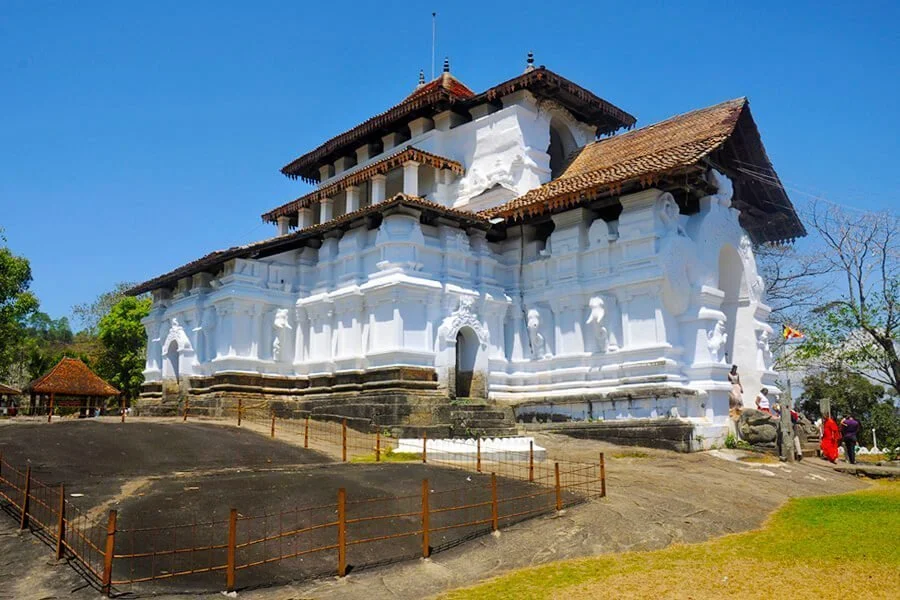
This majestic monument, commissioned by King Parakramabahu, is a permanent reminder of the once-great Polonnaruwa. It is probably our favorite temple in the entire complex. Its splendor in the 12th century elevated it to the status of one of Asia’s most important Buddhist temples.
Its walls were built with bricks and reached an astounding height of 17 meters and a thickness of four meters. Inside, there’s an imposing standing Buddha that was once 13 meters tall (including its base), but only the torso is still there.
The Buddha figures of Gal Vihara

Prepare to be blown away when you finally come upon the Buddha figures of Gal Vihara, one of Sri Lanka’s most well-known rock-cut Buddha statues. This largely man-built cavern, also known as the Rock Monastery, is made up of three enormous rock-cut pictures and one smaller statue, all of which are beautiful in their own way.
The Buddha sculptures in Gal Vihara, each with a distinct appearance, are without a doubt the most flawless specimens of solid granite Buddha statues in Sri Lanka. You will not be disappointed if you come across these rare items, which are distinct and very different from the usual sculptures found in other parts of the island.
Pothgul Vihara complex
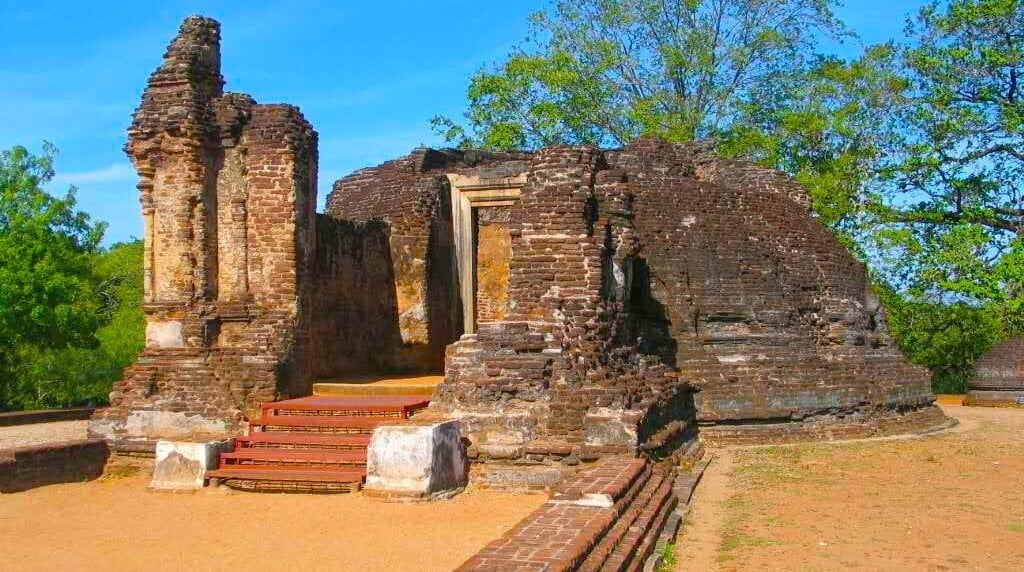
The final place we recommend visiting in Polonnaruwa is Pothgul Vehera, a Buddhist library where sacred writings were held and studied. The complex is unlike any other monastery in the country in terms of layout, making it one of the most prestigious locations to visit in Polonnaruwa.
The most remarkable structure at the site is a circular shrine built on a square terrace in the center of the grounds.
Things to know before visiting the Polonnaruwa temples
There are a few things you should know before visiting the Polonnaruwa ruins:
- We strongly advise hiring a guide or attending a pre-arranged tour of the sacred city (we prefer this bike trip or this tuk-tuk tour). Its sheer size and scale are startling, and a guide can truly help you comprehend the complex’s past magnificence. They’re not too pricey and well worth it.
- Taking a photo with your back to Buddha is a popular and sacrilegious practice among foreigners throughout Asia. So, just be extra cautious when taking photos, and remember to respect all religions (including atheists!) as you would your own.
- Take off your shoes and caps before entering the sacred regions to honor the Buddhist culture and preserve the treasured relics. We recommend wearing socks to make walking over the hot stone more bearable.
- Sri Lanka is a very conservative country, especially around their historic Buddhist places, therefore cover up – that means covering your shoulders and knees (for both men and women).
Enjoy your trip in Polonnaruwa :). If you have questions, please feel free to comment below.

